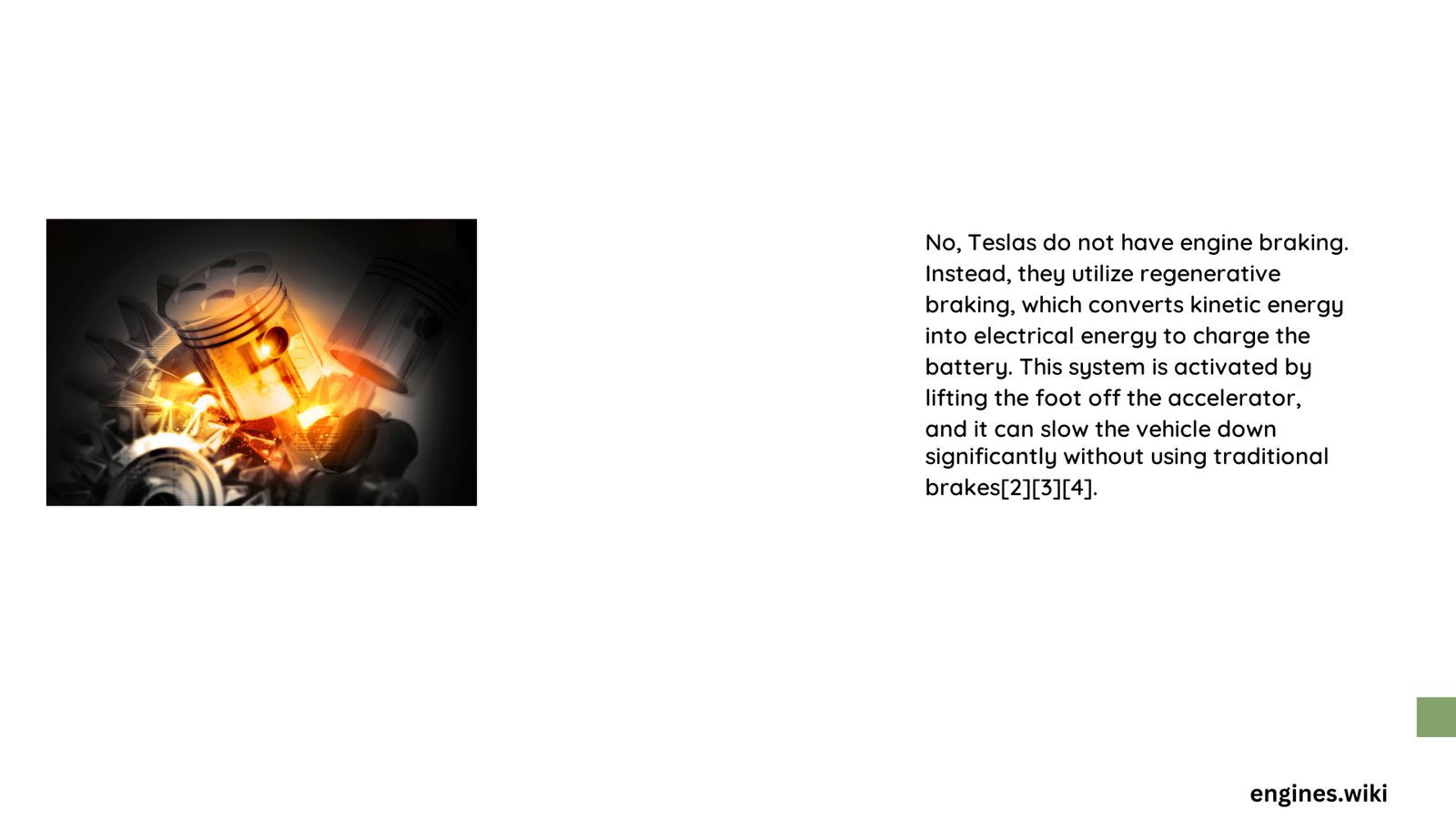Tesla vehicles do not have traditional engine braking found in combustion engines, but they employ an advanced regenerative braking system that effectively captures kinetic energy and provides controlled deceleration. Unlike conventional vehicles that use mechanical compression to slow down, Teslas convert vehicle momentum into electrical energy, storing it back in the battery while simultaneously reducing speed.
What Makes Tesla Braking Different?
How Do Electric Motors Create Braking Force?
Electric motors in Teslas function as generators during deceleration, transforming kinetic energy into electrical energy. This process, known as regenerative braking, allows the vehicle to:
- Recover up to 70% of energy typically lost during braking
- Reduce mechanical brake wear
- Extend overall vehicle range
- Provide smooth, controlled deceleration
What Are the Mechanics of Tesla Regenerative Braking?
| Braking Component | Function | Energy Recovery Efficiency |
|---|---|---|
| Electric Motor | Converts kinetic energy to electrical energy | 65-70% |
| Battery Storage | Stores recovered electrical energy | 90-95% |
| Friction Brakes | Supplemental stopping power | 10-15% |
Can Drivers Control Regenerative Braking?
Tesla provides multiple braking modes that allow drivers to customize their deceleration experience:
- Standard Mode: Automatic energy recovery
- Hold Mode: Maintains vehicle at low speeds
- Creep Mode: Mimics traditional automatic transmission behavior
What Factors Impact Regenerative Braking Performance?
Several critical factors influence regenerative braking effectiveness:
- Battery temperature
- Current battery charge level
- Vehicle speed
- Driver’s acceleration and deceleration patterns
Are There Limitations to Regenerative Braking?
While highly efficient, regenerative braking has some constraints:
- Reduced effectiveness at very low speeds
- Limited energy capture when battery is fully charged
- Performance variations based on environmental conditions
How Efficient Is Tesla’s Braking System?
Tesla’s regenerative braking demonstrates remarkable efficiency:
- Reduces brake pad wear by approximately 50%
- Can potentially add 5-10% additional range
- Provides smoother deceleration compared to traditional braking
What Technical Innovations Enable This Braking Method?
Tesla’s braking system incorporates advanced technologies:
- Sophisticated power electronics
- Precise motor control algorithms
- High-efficiency electric motor design
- Integrated battery management systems
Conclusion

Teslas do not have traditional engine braking but offer a technologically superior alternative through regenerative braking. This innovative approach transforms vehicle deceleration from a energy-losing process to an energy-recovering mechanism, representing a significant advancement in automotive engineering.
